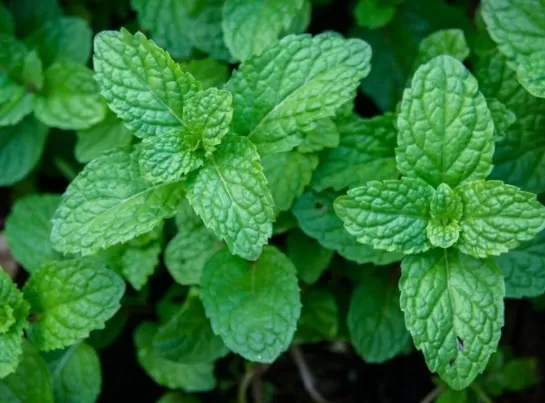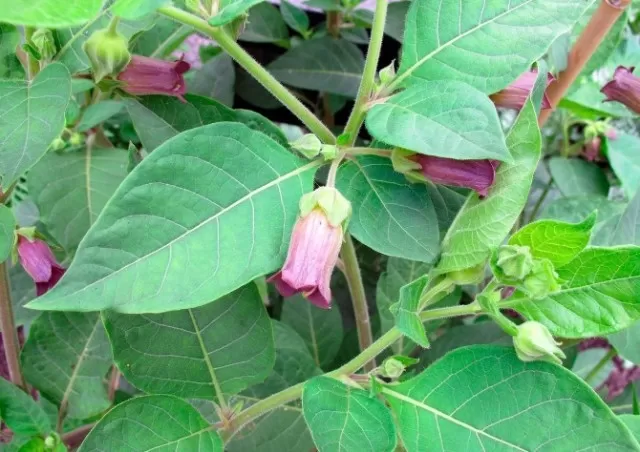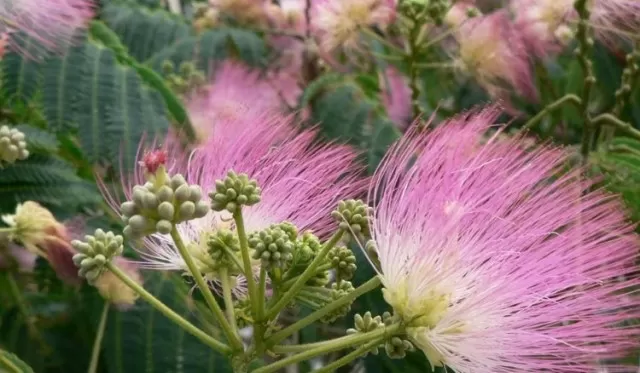Yard No-Grow List: Plants to Avoid in Your Landscape. When considering these plants for your garden, it is essential to assess the specific needs of your landscape, climate, and the potential impact on the surrounding environment. Researching local regulations and consulting with gardening experts can provide valuable insights to help you make informed decisions.
Remember, a successful garden is one that thrives harmoniously with its surroundings, promoting beauty, biodiversity, and safety for all who enjoy it. By carefully selecting plants and being mindful of their characteristics, you can create a garden that brings joy and tranquility without compromising on potential challenges.
Mint: The Versatile Herb That Enlivens Your Senses and Garden

Mint, a remarkable herb with numerous benefits, is a true delight to cultivate.
Its versatility as a culinary and aromatic addition to dishes and beverages is unmatched. Not only does it enhance the flavor and aroma of various recipes, but it also adds a touch of elegance when displayed alongside vibrant blooms in a vase.
However, it’s important to be aware of the potential challenges posed by its invasive nature.
While the lush foliage and refreshing scent of mint make it an attractive choice, its vigorous roots can quickly become unruly if left unchecked.
If you desire to introduce one or more of the delightful mint varieties into your garden, it is highly recommended to exercise caution and take preventive measures. To avoid the risk of your mint spreading like a weed and overpowering other plants, it is advisable to confine it to a container.
By planting your mint in a container, you not only maintain control over its growth but also safeguard the harmony and balance of your garden.
This proactive step ensures that your mint remains a cherished asset, providing you with an abundant supply of fragrant leaves and sprigs without encroaching upon the space of neighboring plants. With proper containment, you can indulge in the pleasure of growing mint while preserving the beauty and order of your garden.
So, embark on this aromatic journey and experience the wonders of mint.
From tantalizing your taste buds with its refreshing flavor to infusing your garden with its invigorating aroma, mint is an herb that brings an array of sensory delights. Embrace the versatility of mint, but remember to harness its growth by confining it to a container—a small step that yields great rewards in maintaining a well-managed and flourishing garden.
Aloe Vera: A Medicinal Succulent with Cautionary Concerns for Pet Owners
Aloe vera, a succulent plant renowned for its remarkable healing properties, has long been recognized for its soothing effects on burned skin.
Its gel-like substance, when applied topically, offers a natural remedy for various skin ailments. However, while aloe vera can be a beneficial plant for humans, pet owners need to exercise caution when it comes to their furry companions.
Although aloe vera has numerous health benefits for humans, it poses a potential risk to pets if ingested.
The latex, commonly referred to as aloe juice, found just beneath the skin of the plant, contains toxic compounds that can lead to significant abdominal distress and cramping in animals. As responsible pet owners, it is crucial to prioritize the well-being and safety of our beloved companions.
Considering the potential adverse effects on pets, it is advisable to err on the side of caution and exclude this botanical medical marvel from your garden if you have animals at home.
By refraining from cultivating aloe vera in your garden, you eliminate the risk of accidental ingestion and the subsequent discomfort it may cause to your furry friends.
While aloe vera continues to hold its reputation as a remarkable healing plant for humans, it is essential to recognize that the same properties that benefit us can pose a hazard to our pets.
As responsible guardians, it is our duty to create a safe environment that promotes the health and happiness of our animal companions.
So, when it comes to aloe vera, it’s wise to exercise prudence and prioritize the well-being of your pets.
Embrace alternative plants that offer beauty and serenity without posing potential risks to your furry friends. By making informed choices and ensuring a pet-friendly garden, you can cultivate a harmonious space that nurtures both nature and the well-being of your beloved companions.
Belladonna (Atropa belladonna): A Bewitching Plant to Be Handled with Extreme Caution

The common name of Atropa belladonna, “deadly nightshade,” serves as a stark reminder that this particular plant is best avoided in home gardens.
Despite its visually appealing features, including lush green foliage, purplish bell-shaped flowers, and glossy black berries, this plant harbors a dark secret—it is highly toxic and demands vigilant precautionary measures, especially in spaces accessible to children and pets.
Atropa belladonna possesses a potent cocktail of toxic compounds, making it a potentially hazardous plant if ingested.
The alluring appearance of this plant may deceive unsuspecting individuals, but it is imperative to recognize its true nature. Even small amounts of ingestion can have severe consequences, causing symptoms ranging from gastrointestinal distress to more serious complications.
To safeguard the well-being of your loved ones, particularly children and pets, it is strongly advised to refrain from cultivating belladonna in your home garden.
By avoiding its presence altogether, you eliminate the risk of accidental ingestion and the potential harm it can inflict.
While the allure of belladonna’s enchanting aesthetics may be tempting, the safety and health of your family and pets should always take precedence.
There are numerous other botanical wonders that can adorn your garden without posing such significant risks. Explore alternative plants that offer beauty, serenity, and a peace of mind, ensuring a safe and nurturing environment for all.
In conclusion, Atropa belladonna, commonly known as deadly nightshade, may possess an intriguing appeal, but its inherent toxicity necessitates extreme caution.
Exercise prudence and prioritize the well-being of those around you by refraining from including this plant in your garden. By making informed choices and fostering a secure environment, you create a haven that thrives on beauty, safety, and tranquility.
Bamboo: A Sustainable Building Resource with Considerations for Gardeners
Bamboo stands out as a highly sought-after building material due to its exceptional durability and rapid growth.
Its renewable nature has made it a popular choice for various construction projects. However, when it comes to incorporating bamboo into your garden, there are important considerations to keep in mind. While it may appear to be an attractive option, the unchecked growth of bamboo can quickly overrun your yard and even encroach upon neighboring properties, leading to a potential nuisance that may take years to rectify.
Despite its many benefits, bamboo’s vigorous growth can present challenges in a garden setting.
Once established, bamboo can spread rapidly, forming a dense privacy screen that may extend beyond its intended boundaries. Without proper containment, it can become an invasive plant, difficult to control and eradicate.
To mitigate these risks and maintain the harmony of your garden space, it is advisable to exercise caution when growing bamboo.
One effective approach is to confine bamboo to large landscaping planters or containers. By doing so, you create a barrier that restricts its growth and prevents it from taking over your yard or encroaching upon neighboring areas.
Container planting provides the necessary control, allowing you to enjoy the aesthetic appeal of bamboo without compromising the integrity of your garden or causing potential inconvenience to others.
If you are determined to cultivate bamboo in your garden, it is essential to be proactive in managing its growth.
Regular monitoring and pruning are necessary to ensure that it remains contained within its designated space. By taking these measures, you can strike a balance between harnessing the benefits of bamboo and preventing it from becoming an invasive presence.
In summary, bamboo stands as a remarkable and sustainable building resource.
However, its propensity for rapid growth and potential invasiveness demand careful consideration when introducing it to your garden. Opting for large landscaping planters or containers offers a practical solution, enabling you to enjoy the beauty of bamboo while maintaining control over its expansion.
With proper planning and containment, you can cultivate a garden that embodies both sustainability and aesthetic appeal.
Mimosa Tree: A Bewitching Beauty with Invasive Tendencies

The mimosa tree, belonging to the shrubbery and silk tree family, possesses an enchanting allure with its delicate, feathery leaves and captivating pink flowers.
It exudes an air of exoticism and romance that can be tempting for garden enthusiasts. However, before succumbing to its charm, it is crucial to recognize the potential repercussions.
The mimosa tree’s invasive nature can disrupt the harmony of your neighborhood and pose significant challenges to your gardening endeavors.
While the mimosa tree’s visual appeal is undeniable, its tendency for invasiveness is a cause for concern.
Once established, this tree prolifically produces seeds that can result in numerous seedlings sprouting throughout your yard and spreading beyond, infiltrating the surrounding neighborhood. The rapid spread of these seedlings can create an unwelcome and overwhelming presence that may prove difficult to contain.
Regrettably, eradicating a fully grown mimosa tree or controlling its seedlings can be an arduous task.
Their resilience and ability to regenerate make them a persistent nuisance to deal with. This invasiveness can strain neighborly relations and cause frustration among those affected by the tree’s spread.
Given the potential challenges associated with the mimosa tree’s invasive tendencies, it is prudent to carefully consider alternatives for your garden.
By opting for native plant species or other non-invasive options, you can maintain the aesthetic appeal of your landscape without the risk of unwanted proliferation.
In conclusion, while the mimosa tree may possess an exotic and romantic allure, it is crucial to weigh its invasive tendencies and the potential consequences.
By making informed choices and opting for more suitable plant alternatives, you can cultivate a garden that fosters harmony and avoids the complications associated with invasive species. Prioritizing the well-being of your neighborhood and the longevity of your gardening efforts ensures a serene and sustainable outdoor environment for all to enjoy.
*The information is for reference only.